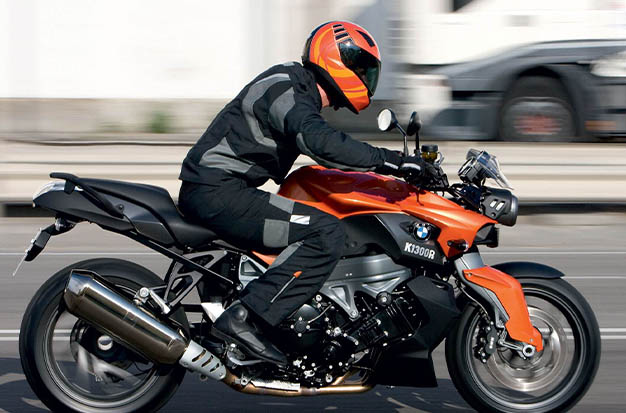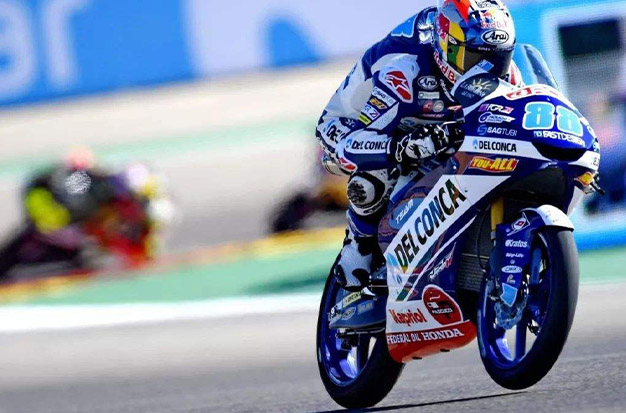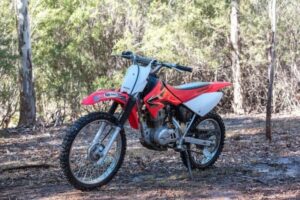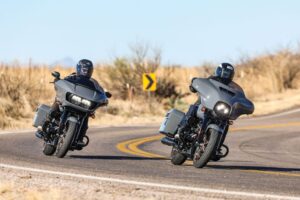If there is one subject that really riles up drivers, it would be countersteering a motorcycle. Some riders may experience confusion when turning quickly. Although it may seem counterintuitive, countersteering is the best and safest way to make a sharp turn without colliding with another vehicle. You don’t have to slow down or stop when changing directions because it keeps your bike moving.
Discover the significance of this holy act for riders worldwide.
What Is Countersteering?
To turn the handlebar in the opposite direction of the direction you want to turn is the straightforward definition. Turn the handlebar to the left if you want to go right. This counterintuitive turning procedure demonstrates the significance of learning countersteering. Simply put, riders who don’t fully understand countersteering—down to the muscle memory level—run the risk of colliding with the car, truck, pothole, deer, or pedestrian they’re trying to avoid. (Watch the slow-motion portion of the video below for an excellent illustration of this. He’s actually fumbling with the handlebars as you watch him try to veer the bike away from the truck.)
How Come Countersteering Is More Stable At 12 Mph?
Countersteering relies on the bike’s inherent stability to make a turn without significantly slowing down or tipping over. This stability is a result of a physics phenomenon known as eigenvalues, which gauges the linear factor’s scaling—in other words, the trajectory of your tires. These values are essential for working with engines and bikes of all types and take into account a variety of factors that come into play when cornering a bike, such as:
- Lean angle
- Lean rate
- Steer rate
- Steer angle
A bike’s stability and uprightness on a particular trajectory at a particular speed is determined using each of these details in conjunction with additional information such as a bike’s weight, shape, and angle of the turn. The most stable speed for most street bikes is between 12 and 18 miles per hour, making these the best speeds to use countersteering.
Why Countersteering?
Above 12 mph, it is the most effective and efficient way to turn a motorcycle. In order to produce instability, we countersteer. Instability is created as a result of pushing forward on the handgrip, which causes the front wheel to out-track away from the corner and causes the bike to lean in the direction we are pressing.
Simply put, countersteering is the safest, most effective way to make any turn at high speeds, so you need to know how to do it properly if you plan to drive. While slowing down and turning your bike might be an option, countersteering is essential for performing avoidance manoeuvres like swerving. Additionally, if a turn is coming up too quickly or is a little sharper than you anticipated, you can adjust your trajectory as needed. It has to do with your safety and the safety of everyone else on the highway or racetrack.
The Function Of Countersteering
A lot of riders simply countersteer without giving it much thought. Rarely is it questioned because it feels right and ensures that turns are completed safely. Countersteering, on the other hand, appears to be wholly incompatible with your objectives when you stop to consider it. In order to turn right or left, you essentially steer your handlebars to the left or right, respectively. So, how does it work?
In order to turn at high speeds with a single-track vehicle, countersteering is required. The reason for this is that during a turn, the two wheels do not always travel in the same direction. The phenomenon known as “out-tracking” occurs when the front wheel’s path tends to diverge from the rear wheel’s path during a turn. When you countersteer your motorcycle, you’re putting your rear wheel on the appropriate path so you can maintain the desired trajectory.
The process of steering is quite straightforward: you simply move the handlebars in the opposite direction of where you want to go.
Let’s assume you are countersteering to turn left in order to make things clear. It is done the following:
- Right handlebars are subjected to a torque.
- The tire will then produce forces in the contact patch to the right as the front wheel rotates to the right about the steering axis.
- The machine as a whole steers to the right
- The bike leans to the left and the wheels are pulled “out from under” it to the right because the forces in the contact patch are at ground level.
- The steering torque required to turn the front wheel back to the left and in the direction of the turn is supplied by the rider, or in most cases, by the inherent stability of the bike.
- A left turn is made by the bicycle.

Ways To Get Ready For Countersteering
- Keep your arms relaxed and parallel to the floor. On the handle bars, you shouldn’t be pulling downward. In essence, you’ll be fighting the bike if you do that. Your handlebars will inevitably jerk slightly if the road is uneven or has potholes. Allow for these tiny movements.
- With the aid of your knees, secure yourself to the bike. It’s important to anchor yourself by hugging the motorcycle with your knees because you won’t be holding onto the handlebars with your arms tightly. Just enough to keep you stable is required; a death grip is not. With the heels of your boot, you can further secure yourself to the pegs.
- Plan your turn. You have entered the turn too quickly if you need to brake, downshift, or, worst of all, slow down while in the turn. Brake before the turn, plan your approach, and then smoothly make the turn. Depending on the type of turn and the road’s camber, you might want to enter the turn differently, but in general, use the delayed apex technique. As a result, you must approach the turn from the outside before moving back in as you pass the turn’s apex.
How Do You Countersteer A Motorcycle?
There are numerous other names for countersteering. Others refer to it as “active steering,” while others use the term “positive steering.” Furthermore, it doesn’t help that the terminology used to explain it is occasionally unclear or even contradictory. The fact that countersteering is required, but that drifting a car is not exactly the same thing does not help either. If you ride a bicycle, however, you may not even be aware that you are countersteering.
Countersteering, in its simplest form, is turning a motorcycle’s handlebars in the opposite direction from the direction you want to travel. Push left, go left is a proverb that is frequently used. Some sources refer to it as “pressing on the bars.” The key is to push the left bar or grip forward and pull the right grip or bar back when making a left turn. In the case of right-hand turns, it’s the opposite.
It’s “counter” to how you steer a car, which is why it’s called “countersteering.” The left side of the steering wheel is pulled down, and the right side is pushed up, to make a left turn in a car.
What Is The Best Way To Countersteer?
Get on your motorcycle and travel at a reasonable 10 MPH to begin countersteering. Find a place where you can walk without worrying about oncoming traffic, like a lonely stretch of road or an empty parking lot. Without spinning out in the dirt, you should be able to make a turn or veer to the right or left.
As soon as you begin to ride, place your palms flat against the handlebars with your fingers pointing upward. Now pull your handlebars toward you rather than pushing them to the right. The centripetal force will cause your bike to begin to sag to the left as it begins to work, and it will then quickly veer left for a smooth turn.
Continue honing your technique until the entire motion comes naturally. You shouldn’t have to consider the turn; instead, you should react to the road by making a subtle turn as necessary.
Other Tips And Accessories To Improve Your Steering
To start, practice makes perfect, just like with any riding or driving skill. You can practice countersteering in a deserted parking lot or on a quiet stretch of road. As you become more comfortable pushing and pulling the handlebars, start out slowly and gradually pick up the pace. When you do, you’ll discover that you can feel how much remaining traction is in the front tire.
It’s essential to know the correct technique for countersteering a motorcycle. But it’s also important to know how to turn or corner safely. In order to find the corner exit, one must look up and far ahead. Get your braking done in a straight line before getting to the corner, and roll on the throttle smoothly. This helps prevent target fixation and makes countersteering more natural. Utilize as much of the road as you can while starting out slowly to build confidence in your abilities.
If you’re comfortable with it, spending the day at a racetrack with a qualified instructor is very beneficial. There are numerous books that go into more detail about countersteering and other handling techniques. Additionally, adding a steering stabilizer, also known as a steering damper, increases a bike’s stability and resistance to mid-corner bumps.
Conclusion
It usually takes some getting used to countersteering. There’s a chance you’ll start out practicing and fall off your bike, make too many turns too quickly, or get dirt in your mouth.
When practicing countersteering, make sure you are wearing the appropriate safety equipment, such as a full-face helmet for long-lasting protection and riding gloves. When you’re messing around on your motorcycle, use a Bluetooth motorcycle helmet to stay in touch with the outside world so you can still make and take calls. Find motorcycle helmet speakers that produce crystal-clear sound without keeping your attention off the road.
While learning the art of counterseeking, you can also use a hands-free motorcycle Bluetooth headset to listen to riding advice and tutorials.
Once you’ve had some practice, you’ll be able to turn your car to the left and right with ease.



